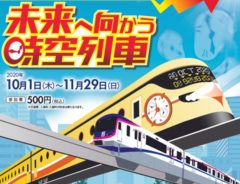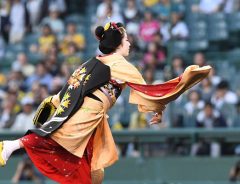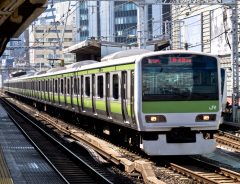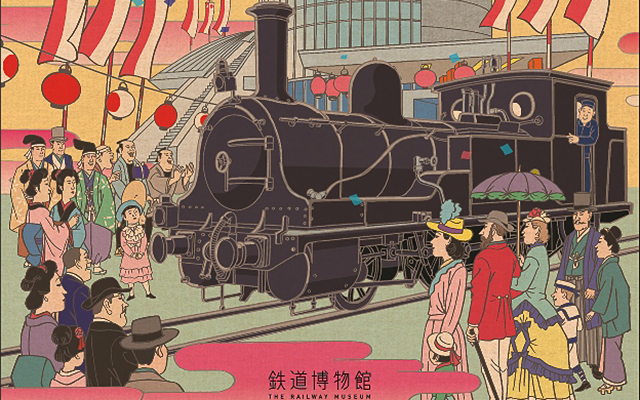- Source:
- © JAPAN Forward / © Omiya Railway Museum
- Tags:
- Earl Kinmoth / Exhibit / JAPAN Forward / Japanese railway / Japanese Trains / Meiji Era / Museum / Omiya / Omiya Railway Museum / Trains
Related Article
-

Return To The Wondrous Woods: Japanese Artists Shine At Bokura no Mori 2 Exhibition
-

A visit to the Tokyo Metro Museum in Kasai
-

Part of train service on Tokyo’s major Yamanote Line will be suspended January 7th-8th
-

Solve this time travel mystery game on the Osakan railway lines
-

[Hidden Wonders of Japan] A Maiko Does the Ceremonial First Pitch at Koshien Baseball Stadium
-

JR East to conduct driverless train test on Yamanote Line with passengers this autumn



© Japan Forward
Text: Earl H. Kinmonth, Professor Emeritus, Taisho University
This year is the 150th anniversary of the Meiji Restoration. In a narrow sense the Meiji Restoration meant restoring the imperial institution to a central position in the Japanese polity. In a broader sense, though, it meant renovation and restructuring.
One key component of this was the construction of railroads. Whereas the pre-Meiji regime carried out limited road and bridge building and restricted the size of ships, the new Meiji government saw improved transportation in general—and railroads in particular—as of prime importance in making Japan a strong, modern country.
Just five years after the overthrow of the Tokugawa regime and its replacement by the new Meiji government, Japan completed its first railroad, running between Yokohama and Tokyo. It had nine passenger trains per day and covered the distance in 53 minutes.
Kobe and Osaka were linked by rail in 1874. Kyoto-Osaka followed three years later, in 1877. By the end of the Meiji era in 1912, Japan had an impressive national railway network connecting most major cities on all four major islands, not just in Honshu, but also Kyushu, Shikoku, and Hokkaido.
Some of the trains on display in the museum's permanent collection:
© Japan Forward
© Japan Forward
Special Exhibition at the Omiya Railway Museum
The building of Japan’s rail system is taken up in a special exhibit that opened on April 28 and runs until September 30 at the Omiya Railway Museum.
Fittingly, Omiya is a city north of Tokyo that grew with the building of the Meiji railroads, especially the Tohoku Line completed in 1891, which runs from Ueno Station in Tokyo to Aomori city at the north end of Honshu. The museum itself was the centerpiece of the “JR East 20th Anniversary Memorial Project.”
The special exhibition displays an impressive collection of documents and photographs from the period. While there are no English explanations, many of the items are easily understood without words. Moreover, contrary to what might be expected when the era was well before color photography, many of the depictions of the early railroads are in fact in very vivid colors.
The wood block printing technology that had been used for the ukiyo-e genre so popular in Europe after the opening of Japan was applied to contemporary subjects from about 1853-1854, even before the Meiji Restoration.
This resulted in numerous colorful woodblock prints depicting the new railroads. Some were quite accurate. Others were quite fanciful. My favorite is one depicting a passenger train pulled by a steam engine with paddle wheels and double decked carriages. It was similar in appearance to passenger steamers in mid-19th century America.
Produced in 1861, this print is a reminder that even before the Meiji Restoration there was knowledge of railroads in Japan. There were written references to railroads in Dutch texts that were the main source of information about Europe before the opening of Japan. Also, a Russian expedition to open Japan in 1853 brought a model railroad, as did Perry in 1854.
Japanese Talent Ready to Use
Standing in marked contrast to the colorful and sometimes wildly fanciful woodblock prints are the many meticulously detailed maps and drawings on display, many of which pre-date the first railroad construction. These give two major hints as to why Japan was able to modernize so rapidly after the Meiji Restoration.
First, they indicate intellectual curiosity in general and curiosity about things foreign in particular. This was noted by S. Wells Williams in his book A journal of the Perry Expedition to Japan (1853-1854), where he compares the Chinese and the Japanese based on his earlier experiences in China.
Written by Japan ForwardThe continuation of this article can be read on the "Japan Forward" site.
Omiya Railway Museum Showcases Dawn of Railroads in Japan Until Sept. 30